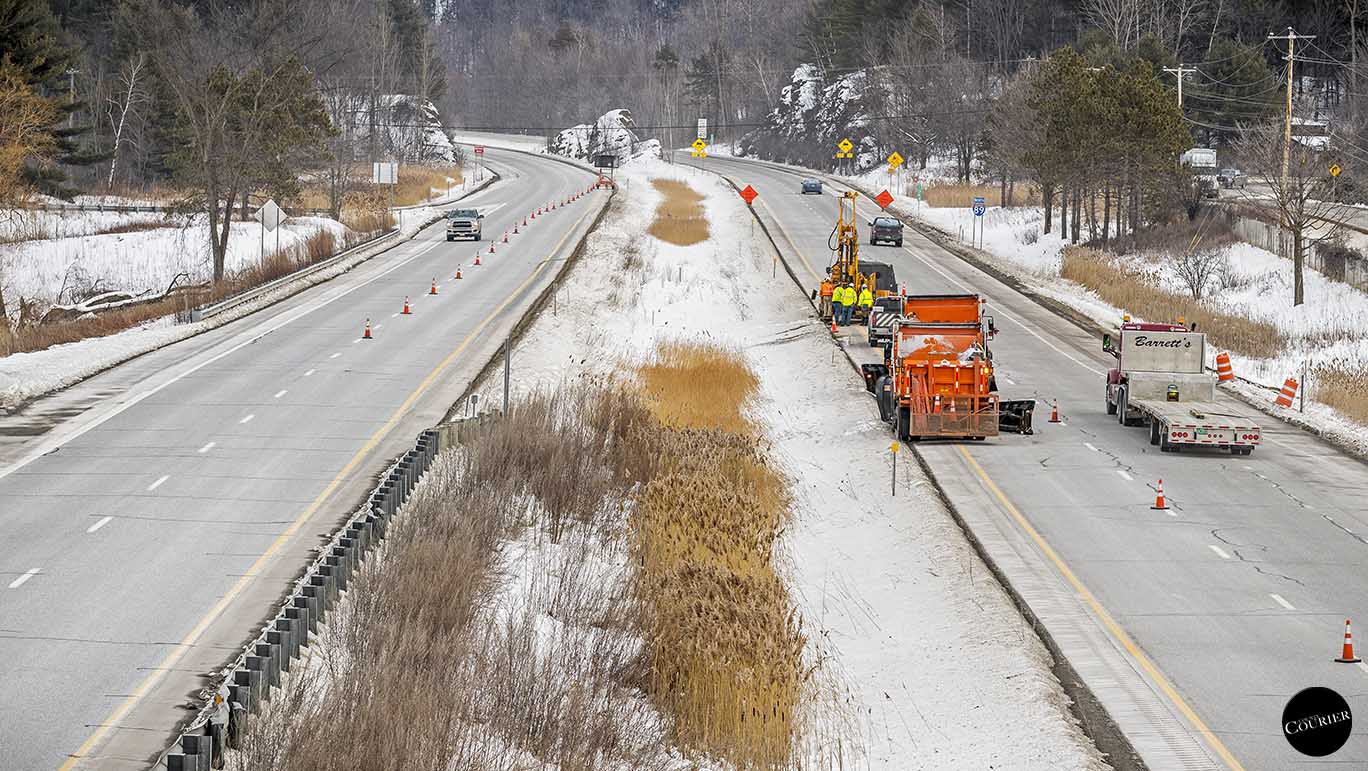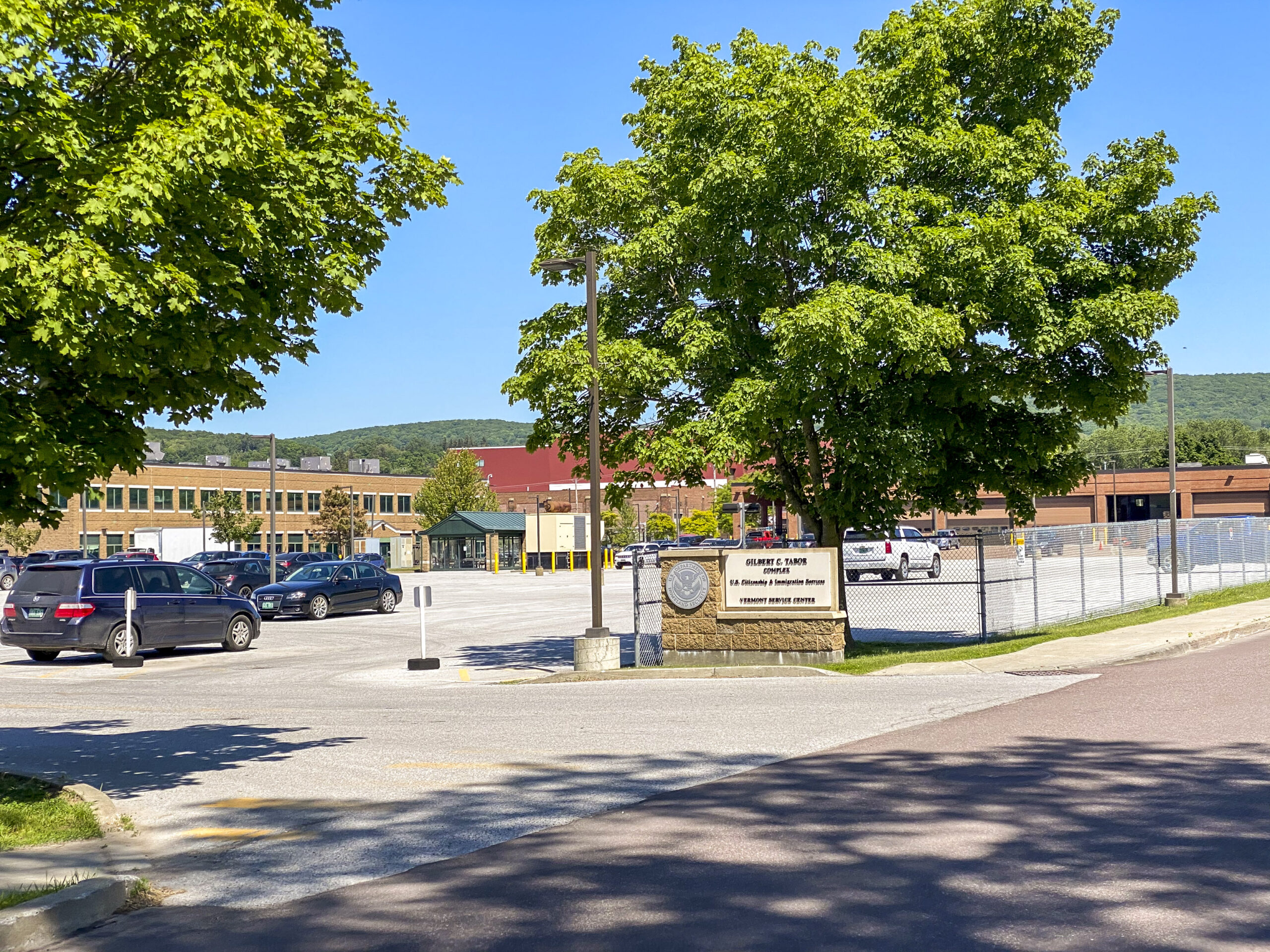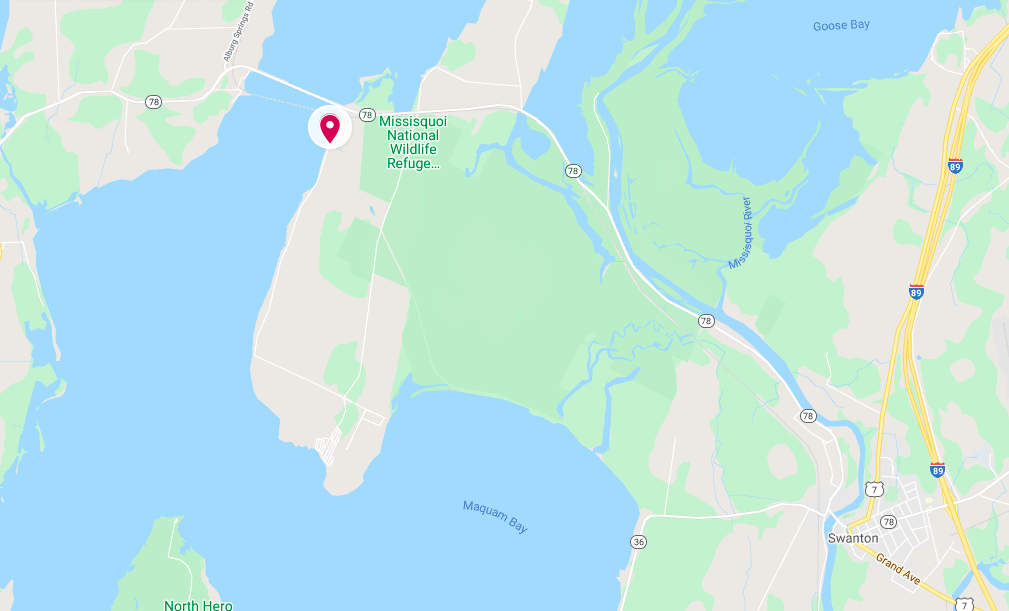MORE DAMAGE DISCOVERED UNDER I-89 AT EXIT 18
By Gregory J. Lamoureux
County Courier
VTRANS officials announced that more damage has been discovered under Interstate 89 just a few hundred feet north of the Route 7 overpass. Workers have been keeping an eye on the storm-damaged culvert along Interstate 89 in Georgia since the Halloween storm, which destroyed the culvert under the Southbound offramp at Exit 18.
While workers were rebuilding that culvert from the ground up, they began so see the median start to dip- a sign that the 580-foot culvert underneath the highway was also undermined.
According to Kristin Higgins, the structures program manager for VTRANS, the metal culverts had already been showing signs of deterioration when the storm hit last fall.
“Culverts don’t just fail overnight,” she said in a telephone interview with the County Courier on Wednesday afternoon.
There were two solutions for repairing the culvert which traverses both northbound and southbound lanes of the interstate, as well as Skunk Hollow Road adjacent to the Northbound lanes.
In order to do the work, officials will be closing the passing lane of the southbound corridor at around 9 am daily. This will allow contractors to safely work in the median during the day. When the workday is finished, the barrels will be moved back to the yellow line, reopening the passing lane of travel until around 9 am the following workday.
Higgins said the closure of the passing lane has nothing to do with the structural integrity of the roadway, but all to do with worker safety, and commuters should not worry when they drive in the passing lane.
The project will come at no small cost to the state, however, of the two options VTRANS had, it is by far less expensive than it could be.
According to VTRANS, they could do a complete new culvert the entire length of the highway. That would shut-down the north and southbound lanes of travel while the work could be conducted- causing a major traffic headache. It would also cost an estimated $12 million to complete.
The alternative, which is the direction officials are working toward, is to build a culvert within a culvert.
The new structure would be installed in segments, slipped inside the existing eleven-foot metal culvert. Each segment would have grout installed from inside to seal the culvert sections and make them watertight.
Higgins said the project is extensive and would still cost around $5 million- but that’s far less than the $12 million alternative.
She was not concerned that the new, cement culvert, would be a foot or two less in diameter than the old culvert.
“It’s a stream that flows under there,” she said.
Higgins said that hydraulic studies have determined the loss of area inside the culvert would not have a detrimental effect on how long the culvert would last.
The existing culvert is original to the highway and was installed in the 1960s, according to Higgins. That culvert had a life expectancy of 50 years.
According to a memo by VTRANS employee Michele Boomhower, the Division Director for Public Transit at VTrans, the existing culvert had small holes in the bottom of it where water could infiltrate. With the Halloween storm, water began eroding the bottom of the culvert quicker and washed gravel away from around the culvert where water could escape.
The cost has come in on the recent total repair of the off-ramp culvert too- that topped out at $2.3 million for its emergency rebuild. Total, with the I-89 culvert, the storm damage is expected to cost about $7.3 million. A vast majority of that expense will likely be paid for with federal money as long as the repairs are completed by the end of April.
According to Boomhower, the Exit 18 culvert could not accommodate a culvert liner because it was far too damaged, and the shape of it would not work with a liner.












